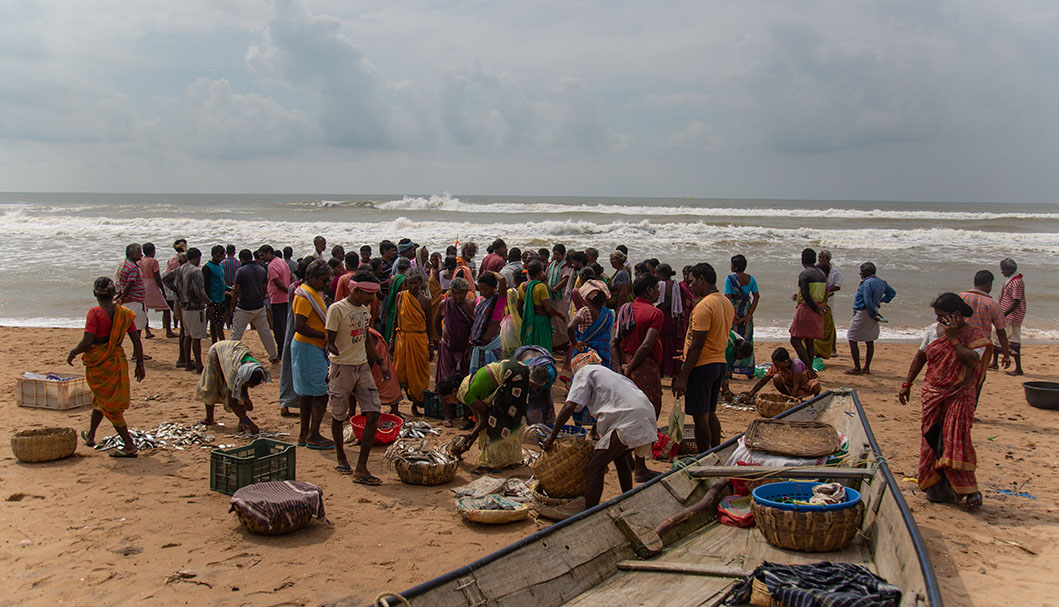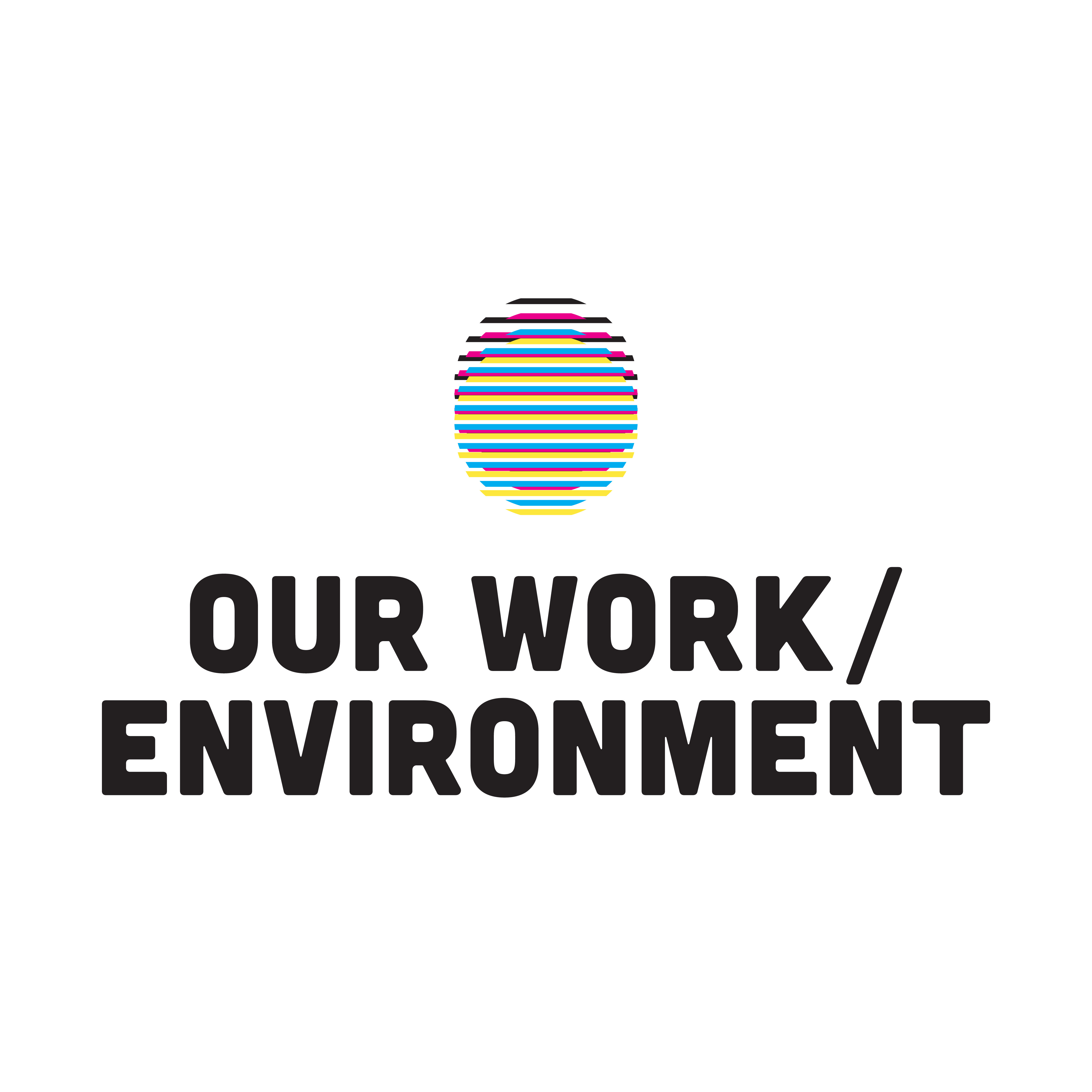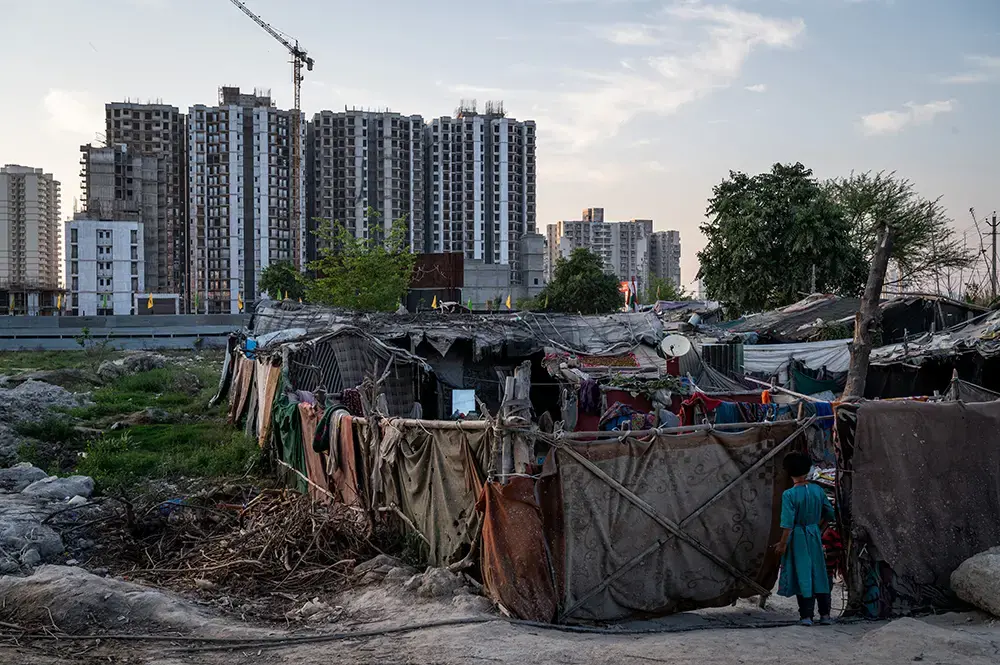
Millions of India’s landless Dalits who migrate to cities looking for work face the prospect of even worse conditions, triggered by extreme weather events.
One morning in October 2011, Dharmendra Ahirwar stepped off a train at Nixamuddin station, clutching his mother's hand. The 13- year-old's eyes nervously tracked his younger sister walking beside him. They followed their father who was trying to navigate the family through the crowd.
Two nights earlier, the Ahirwar family sat under a peepal tree in the courtyard of their house in a village in Sagar district of Madhya Pradesh. "I could sense that we were struggling," says Dharmendra, now 24, recalling that day. "That night, my father said we would have to go to Delhi to earn. Some people had told him that the city offered a lot of work."

As a nonprofit journalism organization, we depend on your support to fund more than 170 reporting projects every year on critical global and local issues. Donate any amount today to become a Pulitzer Center Champion and receive exclusive benefits!
Dharmendra remembers asking his mother whether they were actually going to leave the village. She nodded in affirmation. "I was so anxious that I could not sleep for several nights after leaving the village. But leaving was a compulsion," he says. "There was no work left in the village, we would have died of poverty."
The family packed their stuff in two large plastic sacks, walked a few kilometres, took a bus, then another, waited for hours at the railway station, and finally boarded an overcrowded general compartment of a Delhi-bound train. They stood for hours, pressed up against each other, until they managed to find some space to sit on the floor, where people entering and exiting the train kept stepping on them. An hour after their arrival, they made space for themselves on a pavement just outside the station. A few days later, Dharmendra and his father began looking for manual work, which they found in the construction sector.
In the last 12 years, Dharmendra has worked on many construction sites, first as an unskilled labourer and then as a mason. He is among the 232 million workers in India engaged in outdoor wage work, according to the Periodic Labor Force Survey, the official source of employment data in the country. Most of these outdoor workers have the lowest incomes and work in the most difficult of conditions. As climate change makes extreme weather events more frequent, these workers will be among the most vulnerable to its impact. Rising temperatures are already affecting their health, resulting in loss of work days and wages.
Annual mean temperatures in India have risen by 2°C since the late 19th century and are projected to rise by a further 1.5-2°C by 2030. In 50 years, L2 billion people in India will live in areas as hot as the Sahara, if greenhouse gas emissions keep rising. McKinsey warns that as a consequence, construction work could become too risky by 2030. The periods when outdoor work is unsafe will increase by 15% by 2030, compared to current levels, the consultancy adds.
Dharmendra doesn't know any of this. Not that he and his family would have done anything differently as climate migrants. His family were among the millions of people who left Bundelkhand because of widespread droughts that sank the region's economy. His father, Mohan Ahirwar, a landless agricultural labourer and a Dalit, spent a big part of his life sowing, irrigating and harvesting crops on others' fields. The agrarian distress that gripped the region left him deep in debt. His family survived on rotis, raw onions and pickles bought with borrowed money. To better their lives, all they could do was leave.
Bundelkhand comprises 13 drought-prone districts of central India across Uttar Pradesh and Madhya Pradesh. Sagar district in Madhya Pradesh, where Dharmendra grew up, is part of this cluster. These districts are among the poorest in the country, despite the region being rich in mineral reserves—it is the only place in the country where diamonds are still found. About 79% of Bundelkhand's population of 18.3 million lives in rural areas, as per the census of 2011. More than a third of households are considered to be below the poverty line. The impact of climate change-induced extreme weather events, especially droughts, are clearly evident here.
Over the past two decades, severe agricultural distress has been the trigger for many suicides in the region. Lack of employment opportunities and the absence of supportive governance forced large-scale migration. Most migrants were landless agricultural labourers from Dalit communities, who moved to cities like Delhi, Surat and Luclmow to find work. More than 80% found work in urban construction projects, doing manual labour. Official numbers from seven districts of the region that fall within Uttar Pradesh's borders suggest that minors like Dharmendra made up almost 50% of the total number of people who migrated out of Bundelkhand.
'It broke my back'
Dharmendra was born in 1999, a time when India was reaping the benefits of a newly opened economy. Yet, he did not grow up with any of those benefits. His family's fortunes were marred by successive droughts. Between 2001 and 2016, 13 droughts hit Bundelkhand. The region witnessed adequate rainfall only once—in 2008—in the first decade of the millennium. While the monsoons kept failing, in some years, like 2015, unseasonal rainfall caused massive crop damage too. The successive droughts also resulted in loss of cattle and depletion of groundwater resources.
Research has shown that Bundelkhand's agricultural economy suffered from issues like the push to cultivate water-intensive commercial crops, the entanglement of caste and land ownership and the neglect of traditional water management systems. Extreme weather events only exacerbated these problems.
Mohan Ahirwar cultivated a two-acre plot as an informal sharecropper for about 15 years. As a landless Dalit, his options were limited to working on the fields of privileged-caste landowners. The informal nature of the arrangement—where a landowner allows a landless farmer to work his land in return for an agreed share of the harvest—makes it exploitative. Besides, landless sharecroppers cannot claim crop insurance or get institutional crop loans and subsidies. Dalits have historically been caught up in such arrangements because of their precarious caste-linked economic circumstances.
Mohan's family helped in cultivating crops like wheat and black gram. After a harvest, he would get to keep five of the 25 bags of produce as payment, while the rest would go to the landowner. "Inflation was not as much as it is now; we could survive on whatever we got from the sharecropping," he says.
But then "a vicious cycle of erratic weather" started after the year 2000, he recalls. It became difficult to even earn those five bags of produce. He had taken on a lot of debt to run the farm and his household. The consecutive monsoon failures resulted in the collapse of Bundelkhand's agrarian economy. Farmland could neither provide work for landless labourers nor sustenance to landowners. People fell into debt traps, which became a leading cause of farmer suicides in the region. "It was an ominous time," Mohan says about the year 2008. "My heart would sink every time I heard that someone has done something to themselves." Between 2003 and 2015, 3,500 farmers ended their lives in Bundelkhand.
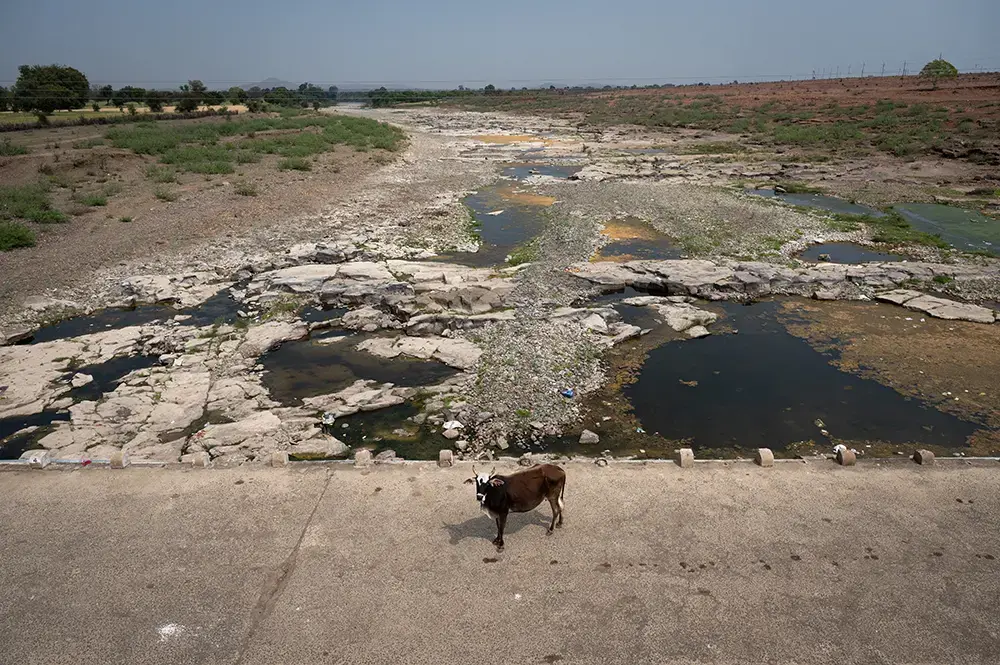
"In 2008, when my almost mature crop got ruined because of the lack of rainfall, it broke my back," says Mohan. "I left sharecropping the same year and started going to nearby cities to find work."
Like Mohan, Khuman Ahirwar was a landless agricultural labourer in Chhatarpur district of Madhya Pradesh a decade ago. "The crops would get ruined because of the weather and the landowners would keep postponing my payments till the next harvest," he says. "I would have been devastated had I been dependent on an agricultural labourer's income." Khuman moved with his family to Delhi and has worked in construction since.
With more than 80% of India's population living in districts highly vulnerable to extreme hydro-met disasters—i.e. disasters related to the hydrological, or rain, cycle, in particular and to the weather in general—and the Indian government's own assessment showing that such disasters are not only increasing in frequency, but also in severity due to climate change, disruption of the livelihoods of India's poorest people has become frequent. Migration has become a way for them to adapt. Reports show that movement among economically vulnerable people is already on the rise. By 2050, about 45 million people across India will be compelled to migrate due to climate disasters, a threefold increase from the present.
"If you go to a village in Bundelkhand, it looks like a dystopian scene," says Raja Bhaiya, a social activist who has spent over two decades working in several districts of Bundelkhand. "Migrants who would usually return to their homes in crop season do not return for years at a stretch. Some of them never come back."
Mohan Ahirwar never went back to sharecropping. He worked as a labourer in smaller cities and towns for a year or so. However, these cities were soon teeming with labourers from rural areas. "There was not enough work and too many of us," he says. It was then that he decided to go to Delhi.
Heat an occupational hazard
For weeks after their arrival in Delhi, Dharmendra's family lived on the pavement adjacent to the railway station with other migrant families. It was the only semblance of community they would find for a while but life was far from secure. "One of us would stay up all night and watch over our stuff so the rest could sleep," he says.
Dharmendra and Mohan would visit a nearby labour market every morning to find work. Such markets serve as informal places where labourers and contractors gather to find and dole out work. Yet another unregularized system that fosters exploitation. If there are many labourers and little work, contractors can offer less than minimum wages. Two weeks into their stay in Delhi, Dharmendra and his family found work at a construction site in Noida, a satellite city of Delhi.
Dharmendra is now married to Roshni, who is a year younger. She is from a neighbouring village in Sagar district and they got married in early 2020. Mohan took on debt to pay for the small ceremony. Roshni's family were not told that Dharmendra was a migrant labourer. "They would not have allowed the marriage had they known," he says. As soon as the first lockdown ended, Dharmendra returned to Delhi with Roshni to look for work. They had a lot of debt to pay off.
Roshni says she does not like living in the city. Most rural migrants end up in cities that are overcrowded and lack the infrastructure that might allow them a dignified life. Besides, exclusionary policies push them to the peripheries of the city and into ghettos and slums.
The couple work together at construction sites. They often live on site as well, where bricks stacked together serve as walls and the roof is a sheet of tarpaulin. Summers and winters are hard but monsoons are worse. "Our clothes and food get drenched," says Dharmendra. Roshni collects wood for cooking and warmth. A portable LPG stove they have is too expensive to use. On occasion, when they rent a room for Rs 2,000 or so a month—the most they can spare—things are not very different. The rooms often do not have proper flooring, ventilation or water supply, and no attached washrooms.

Over the years, Dharmendra acquired the skills to become a mason. For a day's work, he gets Rs 500-600 and Roshni gets Rs 200-300 as a helper. A good month for Dharmendra is when he gets work for at least 20 days and the couple make about Rs 18,000. Most of this income goes into sustaining themselves on the days when there's no work. They are able to save very little. Good months, however, are becoming rare.
Dharmendra could not recall a single month in all of 2022 when he earned Rs 18,000.
One day in April 2022, while working at a site on the outskirts of Gurugram, Dharmendra felt chills run down his body and he began to sweat profusely. He ignored the sensations and finished his work day. That evening, his fever spiked. He had suffered a heatstroke.
Dharmendra had been working outdoors at a time when a heatwave had hit many parts of India. Heatwaves are increasingly becoming frequent. On an average, between 2013 and 2019, India experienced 114 days of heatwave conditions every year. The average duration of a heatwave has increased by 150%, from two days in 2012 to almost five days in 2016. Also, a growing percentage of India's population is getting exposed to heatwaves. In 2012, just under 20 million people were exposed to blistering heat, compared to 60 million in 2016—a 200% increase.
Heatstroke was common among construction workers this writer spoke to. As were kidney stones. A few years ago, Khuman Ahirwar was diagnosed with kidney stones, which is closely linked to heat stress. "The doctor told me that the conditions in which I work could be a factor. He asked me to keep drinking water at work also," he says. "But, labourers are not allowed to stop during work. Contractors stand on our heads."
A study looking into the impact of heat and humidity on 142 migrants in south India found that 77% of workers reported a range of health impacts including headache, nausea and vomiting. Women also reported that heat stress combined with the lack of access to toilets aggravated urinary tract infections and kidney-related illnesses. About 66% of women workers complained of significant impacts on their social lives in the form of disruptions in children's education, addictions, and the inability to care for family due to frequent sickness.
Khuman has met with several accidents at work caused by fatigue. He has also begun to have sudden pains in his chest that he has not gotten checked. "Doctors make everything scary," he says. Employers and contractors who engage labourers do not enforce heat protection measures like breaks, or train workers to protect themselves.
Khuman takes a fatalistic view of his situation. "Saab, ye sharee rakela kamane ka sadhan hai. tab tak chal raha, chal raha hai. (Sir, physical labour is the only source of income for me. I am going to continue as long as my body can support it.)"
After his heatstroke, Dharmendra was confined to his bed for two weeks. Throughout his sickness all he could think of was the work days he was losing. A study published in Nature Communications last year shows that India has the largest heat exposure impacts on heavy manual labour among South Asian countries. The country lost more than 101 billion hours per year. The study projected that India, China, Pakistan and Indonesia, where large sections of the population work outdoors, will experience the biggest losses overall as temperatures rise due to climate change.
Once he recovered, Dharmendra managed to find work for a few months. Then came the monsoon season. Heavy rain disrupted work, income and life. After the rains, when he finally found stable work at an apartment site, smog hit Delhi and nearby cities, forcing all construction activities to stop as part of pollution-control measures.
Worsening weather events dictate the livelihoods of the most vulnerable people, those who have already uprooted their lives trying to outrun the impacts of the climate crisis. The current year has already seen the first heatwave warning in February. Temperatures rose to 33.6 degrees Celsius in Delhi, the third highest temperature recorded in 55 years for the month.
At contractors' mercy
Climate change when mixed with caste makes matters worse for vulnerable communities. Research shows that slow-onset disasters like drought are pushing many into bonded labour.
Take Sanjay Ahirwal, a 34-year-old landless farmer from Damoh in Bundelkhand, who moved to Ghaziabad on a contractor's promise of stable work and decent daily wages. He soon found himself, his wife and three children confined to the basement of the building he was working on. The contractor withheld their wages and made them work 15 hours a day for almost four months until the police freed them. "My body becomes numb and a shiver goes down my spine whenever I think of those months," says Sanjay. "With each passing moment, for four months, I was afraid for my family. I was humiliated. I would have ended my life in that basement if my family was not there." He returned to Damoh and never went back.
Nirmal Gorana, the convener of the National Campaign for Eradication of Bonded Labour, has helped free thousands of bonded labourers over the last 15 years. "Contractors are always in search of such labourers who are migrating in distress," says Gorana. "They prey on them."
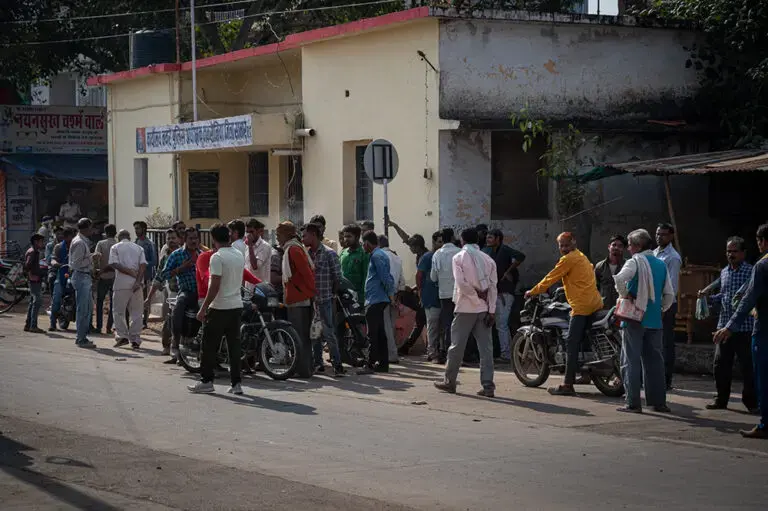
A study shows that 42% of migrant households from drought-ridden Palamu district in Jharldiand were trafficked, compared to 16% in Kendrapara, Odisha, impacted by cyclones. Palamu's migrants are mostly Dalit and tribal families with low literacy, while Kendrapara's migrants are mostly from forward castes with higher literacy levels. "Palamu suffers from slow-onset events, which often do not get the same attention as rapid-onset events in areas like Kendrapara," writes Ritu Bharadwaj, the lead author and senior researcher at the International Institute for Environment and Development, in the paper titled "Climate change, migration and vulnerability to trafficking." She points out that many states wait for droughts to become severe to declare them disasters so they can access central funds. As a result, many droughts either go unreported or are declared so late that communities are forced to migrate to survive.
Dharmendra's family too had a brush with bonded labour soon after they came to Delhi, A contractor required the entire crew, including Dharmendra's family, to stay within the construction site that was surrounded by high walls and had guards at the gates. They were paid a fraction of their monthly wages with the promise of being paid the full amount after a few months' work. When this promise did not materialize, Dharmendra's father confronted the contractor only to be met with threats of violence. Mohan and other workers managed to scale the wall and contact Gorana, who brought the police to the site to release the workers.
In the absence of systemic safeguards for climate migrants, Dharmendra has devised his own safeguards. He leaves a job if his dues are unpaid in the first pay cycle. As far as possible, he works with contractors with whom he has had a good experience. And, he asserts his rights. When a contractor refused to pay him and threatened to beat him up if he left work, Dharmendra camped at the nearby police station and demanded action. "When the station in-charge refused to help and tried bullying me into leaving the premises, I looked up the number of the police commissioner from the Internet and called him for help," he says. "At least I do not fear the system anymore. I stand up and claim my rights, no matter who I am standing against."
But even after all these years, work continues to be hard to come by. His aspirations revolve around finding regular work that will fetch him at least Rs 20,000 a month. "Ab kuch bhi ho, hum jaise logon ke peas vikalp hi kya hai majdoori ke alava. Padhai purl karli hod toh boat our hod (Whatever happens now, I do not have any option but to work as a labourer. If I had completed my studies, maybe things would have been different.)," he adds.
That said, Dharmendra still wishes he owned some land back in the village. "Zameen se bharosa bana rehta hai (Owning land is an assurance.)," he says wistfully. "Whether you are able to earn from crops or not is a different matter, your land remains your land. Several times when we were going through difficult phases in the city, if we had land, we would have just chosen to come back."
This is the third and final installment in a series on climate change, livelihood and migration in India. Read the first two stories here and here.


